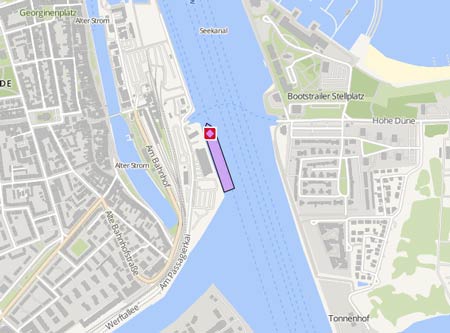URSA MAJORscrapped
Course/Position
Latest ports
Latest Waypoints
Latest news
Russian spy ship operating at sinking site
The Russian spy ship 'Yantar' (IMO: 7524419), that last week had NATO forces in Greece and southern Italy on alert, has left the port of Algiers, where it had been stationed for a few days, and is now operating in the western Mediterranean in the same stretch of sea where, on Dec 24, the 'Ursa Major' sank. The cause of the sinking has not been established, but it is known that an explosion struck the engine room, while carrying critical components for the construction of a Russian nuclear icebreaker in the Far East. It is therefore possible that the 'Yantar', officially designated as an oceanographic research vessel, is working to locate the wreck and investigate what actually happened.
Loss of the reactor hatch covers another setback for the Lider icebreaker program
The sinking of the 'Ursa Major' also caused the loss of two reactor hatch covers for the nuclear icebreaker 'Rossiya on Dec 23, 2024'. Russia's flagship icebreaker of the the Lider class faces an uncertain future after the cargo ship sank with the massive, custom-built hatch covers. The construction of the 'Rossiya' is already three to four years behind the schedule set in the 2020 contract, which called for the vessel to be completed in 2027. The Rossiya was originally intended to be one of three Lider-class icebreakers designed to operate year-round on the Northern Sea Route. The 45-ton reactor hatches provide access to the vessel's power plant. The cause of the sinking is still under investigation, with Russian authorities calling the incident a "terrorist attack." The 'Ursa Major' was, however, familiar with maritime emergencies. In November 2020, the vessel, then called 'Sparta 3', was the target of a month-long rescue operation on the Arctic Northeast Passage (Northern Sea Route). The vessel's operator was Oboronlogistics, a transport service provider for the Russian Ministry of Defense, when the vessel deviated from its approved route and acted in violation of its permit to sail on the Northern Sea Route when it entered the Yenisei Bay of Dudinka and became trapped in a ice buildup. Oboronlogistics attempted to free the vessel with the help of a local ice-class tug, but to no avail. In late December, the nuclear icebreaker 'Vaigach' had to be sent on a rescue operation. After steering problems, several icebreakers had to take part in the complex rescue operation to tow and escort the vessel back to Murmansk. The Rosatom, Russia’s state-owned company with overall responsibility for nuclear power, condemned the operator’s actions.
Mevedev, close confidant of Putin, falsely accused Norwegian ship of refusing assistance
After the "Ursa Major" sank after several explosions between Spain and Algeria, the Norwegian freighter 'Oslo Carrier 3' assisted a rescue boat. However, the former Russian President Dmitry Medvedev, a close confidant of Vladimir Putin, accused the Norwegian shipping company Bulkship Management refusing to take on board crew members of the ship. Bulkship Management immediately denied the accusation. The lifeboat with the 14 survivors was moored to the "Oslo Carrier 3", sailing nearby, until a ship from the Spanish Coastguard arrived, which ordered that the sailors not be taken on board because it was on its way, Bulkship Management explained in a statement. "The weather was good, none of the sailors in the lifeboat were injured and they were not in immediate danger." To support its account, the Norwegian shipping company has published two photos: one shows the lifeboat moored to the side of the "Oslo Carrier 3", the other shows it being towed by a Spanish ship. Medvedev, on the other hand, portrayed the behaviour of the crew of the Norwegian ship as part of Europe's alleged anti-Russian measures. "What is there to explain? This is unforgivable. The behaviour must be punished with all available means" wrote the vice-chairman of the Russian Security Council.Medvedev also demanded that so-called hybrid attacks be used. This generally includes the use of acts of sabotage. Such an act may have occurred as recently as Dec 25, when the Estlink 2 power connection between Estonia and Finland was interrupted. Finnish investigators on Dec 26 seized the tanker "Eagle S", loaded with Russian oil, which is suspected of having damaged the cable. The ship belongs to the so-called Russian shadow fleet - tankers and other cargo ships that Russia uses unofficially to circumvent sanctions, for example when transporting oil. After the sinking, Oboronlogistika spoke of a terrorist act. The ship was not overloaded, the company was quoted in Russian media as saying. Instead, the surviving crew members reported three consecutive explosions on the starboard side. Oboronlogistika and SK-Yug, the operator of the freighter, were sanctioned by the US in 2022 because of their ties to the Russian military. Photos: https://bulkship.no/737-2/
Upload News

